The Top Comfort Shows On TV According To Reddit
Television can be a powerful source of comfort, providing an escape from the stresses of daily life and offering a chance to relax and unwind. Whether...
Trending:
The 2000s were a decade of incredible innovation in the mobile phone industry. With the introduction of new technologies like 3G and Bluetooth, phones became more than just devices for making calls and sending texts. Amidst the rapid change and technological advancement, there were a few mobile phones that stood out as true classics. Here we’re taking a closer look at some of the most iconic phones from the 2000s from the Motorola Razr to the LG Chocolate.
The 2000s were a decade of incredible innovation in the mobile phone industry. With the introduction of new technologies like 3G and Bluetooth, phones became more than just devices for making calls and sending texts. Amidst the rapid change and technological advancement, there were a few mobile phones that stood out as true classics. Here we’re taking a closer look at some of the most iconic phones from the 2000s from the Motorola Razr to the LG Chocolate.
🍿 Hello! If you're a big fan of TV Shows, Films and Pop Culture, take a moment to browse the January Media Shop where you'll find gifts, t-shirts, totes, candles and more. Click here to browse our collection.
The 2000s were a decade of incredible innovation in the mobile phone industry. With the introduction of new technologies like 3G and Bluetooth, phones became more than just devices for making calls and sending texts. They became portable entertainment centre’s and personal assistants before social media dominate the device. Early 2000s mobile phone design was truly unique and a surprisingly innovative industry when looked back upon in the iPhone era.
Amidst the rapid change and technological advancement, there were a few mobile phones that stood out as true classics. These were the phones that defined an era, capturing the hearts and imaginations of millions of people around the world. Here we’re taking a closer look at some of the most iconic phones from the 2000s. From the Motorola Razr to the LG Chocolate, these memorable phones had unique designs, innovative features, and now a nostalgic quality.
We'll explore what made each of these phones so special, why we miss them today, and their legacy in mobile technology. Take a trip with us down memory lane and revisit some of the classic phones we miss from the 2000s.
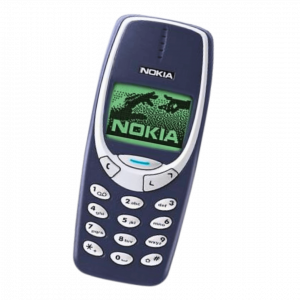
The Nokia 3310 was a popular mobile phone model manufactured by Nokia first released in 2000 and it became one of the most successful phones of its time, selling over 126 million units worldwide.
The Nokia 3310 had an outstanding battery life with a standby time of up to 260 hours and talk time of up to 4 hours. It was also well known for its sturdy build and could withstand rough handling including being dropped down flights of stairs - something well tested by the internet. One of the most memorable features of the Nokia 3310 that has gone down in internet history is that it came pre-installed with the iconic game, Snake.
The Nokia 3310 also had a T9 predictive text which made typing messages faster and more convenient as well as interchangeable covers that allowed users to change the colour of their device.
The Nokia 3310 was widely recognised for its reliability, affordability, and simplicity. It was a highly popular phone during its time and remains a nostalgic favourite for many people today.
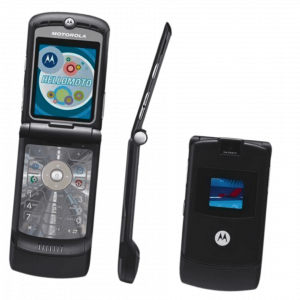
The Motorola Razr was a razor thin flip phone model manufactured by Motorola, first released in 2004. It quickly became one of the most iconic phones of its time, selling over 130 million units worldwide.
The Motorola Razr was beloved due to it’s sleek and slim design that was considered revolutionary at the time. The phone had two screens, one on the front and one on the inside, which allowed users to see who was calling without having to flip open the phone which at the same time would answer the call. The Razr’s phone had a VGA camera that could take quite low-resolution photos and videos but it also had Bluetooth connectivity, which allowed users to connect to other devices wirelessly. The Motorola Razr was popular at a time portable music technology was advancing rapidly so it also had a built-in MP3 player that allowed users to listen to music on the go.
The Motorola Razr is widely remembered for its sleek design, innovative features, and high-quality performance. It was a highly popular phone during its time and remains a nostalgic favourite for many people today. In 2019, Motorola released a new version of the Razr with a foldable screen, which garnered much attention and interest.
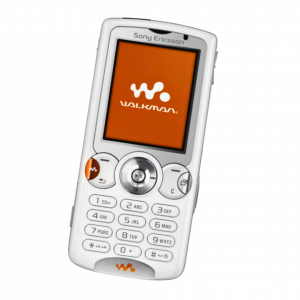
The Sony Ericsson Walkman was a series of mobile phones manufactured by Sony Ericsson, specifically designed for music playback. The first Walkman phone, the Sony Ericsson W800i, was released in 2005.
The Sony Ericsson Walkman's included a dedicated music player with buttons for play/pause, skip, and rewind with a Mega Bass feature that enhanced the low-frequency sound of music. It also had room for a memory card slot that allowed users to store more music and an FM radio receiver, which allowed users to listen to their favourite radio stations on the go. The Sony Ericsson W800i had a decent phone camera (for that time), 2-megapixel for photos and videos.
For a phone focussed purely on music, the Sony Ericsson Walkman series including the W800i was widely regarded as excellent for sound quality and music playback capabilities. It was a highly popular phone during its time, especially among music lovers, and remains a nostalgic favourite for many people today. Sony has since released several iterations of the Walkman phone, including the Xperia XZ2 with high-resolution audio playback.
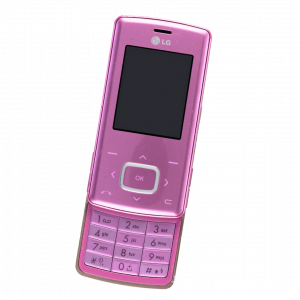
The LG Chocolate was a highly popular mobile phone model manufactured by LG especially with young people as it was an affordable first phone. It was released in 2006 and quickly became one of the most stylish and sleek phones of its time that holds a special place in the hearts of 90s kids. The LG Chocolate had a unique touch-sensitive keypad that lit up when touched, giving the phone its iconic "chocolate" appearance. It’s built-in MP3 player and 1.3-megapixel camera made it popular with media-lovers especially coupled with the memory card slot that allowed users to store more music and photos. It also had an FM radio receiver which allowed users to listen to their favourite radio stations.
The LG Chocolate is remember mainly for its stylish slide-up design and innovative touch-sensitive keypad. It was a highly popular phone during its time and remains a nostalgic favourite for many people today. LG has since released several iterations of the Chocolate phone, including the LG Chocolate 3 in 2008 and the LG Chocolate BL40 in 2009.
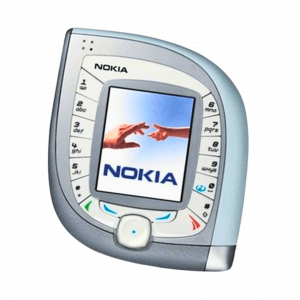
The Nokia 7600 was another unique mobile phone model manufactured by innovators at Nokia. It was first released in 2003 and was notable for its unconventional design and features. The Nokia 7600 had a teardrop-shaped design that was unlike any other phone on the market at the time - it almost looks unbelievable or space-age looking back at it. The VGA camera included wasn’t it’s main feature but you could take decent photos and videos for 2003. The phone’s built-in MP3 player was a highlight that allowed users to listen to music on the go. It’s large screen added to it’s futuristic appeal; it display up to 65,000 colours.
The Nokia 7600 was a highly unique phone that had one of the most unusual designs of the time. Despite it’s look, it was not as popular as some of Nokia's other models, and production was discontinued in 2005. Despite its limited success, the Nokia 7600 remains a curious footnote in the history of mobile phone design.
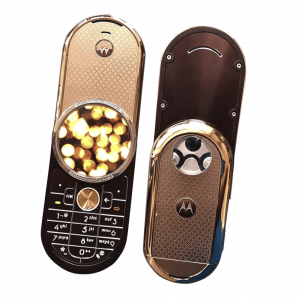
The Motorola Aura R1 was a high-end and unique mobile phone model made by Razr manufacturer’s Motorola. It was first released in 2009 and was notable for its unique design and premium features. It’s high-quality stainless steel construction gave it a premium look and feel coupled with an innovative circular display that was made of scratch-resistant sapphire crystal.
The phone had a large (for the time) 2GB of internal memory, which allowed users to store music, photos, and videos to play on it’s built-in music player. The Motorola Aura R1 also had 3G connectivity, which allowed users to access the internet and download data including new ringtones at high speeds.
The Motorola Aura R1 was a premium mobile phone that was aimed at luxury consumers. It was not as popular as some of Motorola's other models, but it remains a fan favourite for those interested in unique mobile phone design in the 2000s.
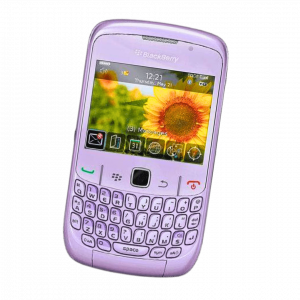
The BlackBerry Curve was a line of mobile phones manufactured by BlackBerry, formerly known as Research in Motion (RIM). It was first introduced in 2007 and quickly became one of the company's most popular models especially with business owners and corporate employees.
Unlike most other mobile phones designed at the time, the BlackBerry Curve included a full QWERTY keyboard that made it akin to a laptop but on a small scale. It also had a different trackball navigation system that made it easy to navigate through menus and web pages much like the wheel in the middle of a computer mouse.
One of the main features users loved using the BlackBerry Curve was the exclusive BlackBerry Messenger (BBM), which was an exclusive messaging service that allowed BlackBerry users to send messages and files to each other for free. The BlackBerry Curve also had email integration that allowed users to set up and access multiple accounts - another reason why the model was so popular with businesses.
The BlackBerry Curve was a popular phone among professionals and consumers who valued its BBM messaging and email capabilities, as well as its physical keyboard. It was also recognised for its durability and long battery life. However, with the rise of touchscreen smartphones, the BlackBerry Curve lost its popularity and was eventually discontinued, much later than assumed, in 2013.
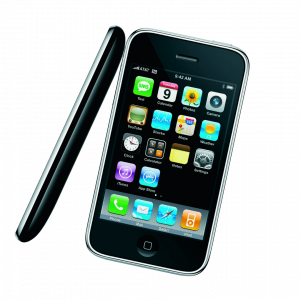
The iPhone 3G was one of the early smartphone models designed and manufactured by Apple Inc. It was introduced in June 2008 as a successor to the original iPhone, which was released the previous year. Some of it’s key features were executed more effectively than other models on the market at the time paving the way for Apple’s future dominance in the mobile phone industry.
The iPhone 3G was the first iPhone model to support 3G data connections, which enabled faster internet speeds for browsing and downloading data. It was also the first iPhone to introduce the App Store, which allowed users to download and install third-party applications directly on their device. The iPhone 3G had built-in GPS (Global Positioning System) technology that allowed users to get real-time location information and directions using Apple's Maps application, something no other phone was doing at the time.
The iPhone 3G was available in two storage capacities: 8 GB and 16 GB, which was twice the capacity of the original iPhone. The camera and battery life was also improved in comparison to the original iPhone and the multi-touch display allowed users to use gestures to interact with the phone, such as pinch to zoom and swipe to navigate.
Overall, the iPhone 3G was a significant upgrade over the original iPhone, offering faster internet speeds, GPS technology, and a wider range of features through the App Store. It was released in June 2008 and was succeeded the next year by the iPhone 3GS in June 2009.
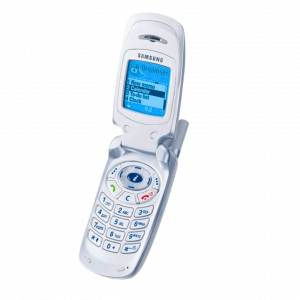
The Samsung A800 was an iconic flip mobile phone released by Samsung in 2002 that went on to feature across many TV shows and films at the time. The flip phone had a number of features that were considered advanced at the time including a dual screen - a main screen and a secondary external screen that displayed basic information such as time, date, and incoming call notifications.
The Samsung A800 was one of the first mobile phones to feature a built-in camera. It had a 0.3-megapixel camera that was capable of taking photos and videos as well as a built-in MP3 player that allowed users to listen to music on the go.
The Samsung A800 supported Java, which allowed users to download and use third-party applications and games with internet connectivity. It also had a built-in voice recorder that allowed users to record audio memos and notes. The phone had a microSD card slot that allowed users to expand the phone's memory and store more data.
The Samsung A800 was considered a truly advanced phone for its time, with features such as a camera, MP3 player, and internet connectivity that were not yet standard on most mobile phones. It was released in 2002 and was quickly succeeded by newer models with even more advanced features from Samsung and elsewhere.
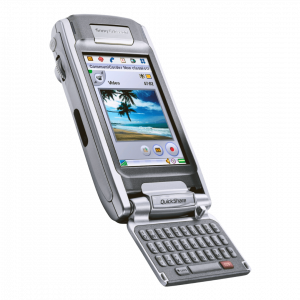
The Sony Ericsson P910 was an innovative smartphone released in 2004. It was an updated version of the previous P900 model and had several advanced features for its time. The Sony Ericsson P910 had a touchscreen display that allowed users to navigate menus and enter text using a stylus or their fingers. This was coupled with a built-in QWERTY keyboard that made typing and sending messages easier and more efficient.
The Sony Ericsson P910 had a Memory Stick Duo slot that allowed users to expand the phone's memory and store more data. It also had a 0.3-megapixel camera that was capable of taking photos and videos. The Sony Ericsson P910 had a suite of office applications, including a word processor, spreadsheet editor, and presentation viewer making it popular with professionals.
The Sony Ericsson P910 was considered an advanced smartphone for its time, with a touchscreen display, QWERTY keyboard, and a range of advanced features for mobile productivity and entertainment. It was released in 2004 and was succeeded by newer models with even more advanced features.
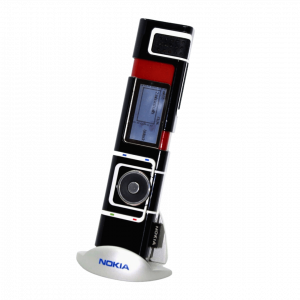
The Nokia 7280 was a truly unique mobile phone released in 2004. It was designed to look like a fashion accessory, with a slim and stylish form factor that resembled a lipstick case. It had a sleek, mirrored front panel and a cylindrical body with a rotating dial.
The Nokia 7280 had a small monochrome display that showed basic information such as call status, signal strength, and battery life. The phone had Bluetooth connectivity that allowed users to wirelessly connect to other devices, such as headsets and computers. The Nokia 7280 also had a built-in voice recorder that allowed users to record audio memos.
The Nokia 7280 was mainly popular for it’s unique and futuristic design to appeal to the Y2K fashion-conscious users who wanted a phone that looked like a high-end accessory. It had some basic features such as a camera, music player, and internet connectivity, but was primarily marketed based on its distinctive design. It was released in 2004 and was a niche product with limited popularity.
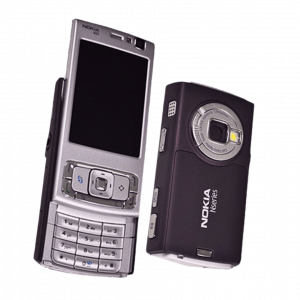
The Nokia N90 was a high-end smartphone released by in 2005 with a 2-megapixel camera with Carl Zeiss optics that was capable of taking high-quality photos and videos. The phone had another unique swivel design that allowed the camera module to be rotated and used in different positions for taking photos or making video calls.
The Nokia N90 had a large 2.1-inch colour display with a resolution of 352 x 416 pixels with 31 MB of built-in memory and came with a 64 MB MMC card that could be expanded up to 2 GB. The phone had 3G internet connectivity that allowed users to browse the web, check email, and use instant messaging applications. It uniquely had had a front-facing camera that allowed users to make video calls.
The Nokia N90 was a high-end smartphone with a focus on photography and video calling. Its unique swivel design and high-quality camera with Carl Zeiss optics made it stand out from other smartphones on the market at the time. It was released in 2005 and was popular among photography enthusiasts and early adopters of 3G technology.
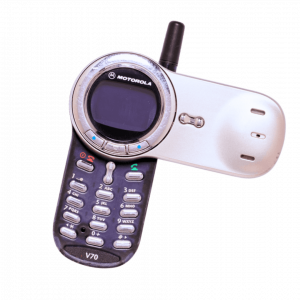
The Motorola V70 was a unique clamshell-style mobile phone that was released in 2002 with a rotary design that allowed the user to twist the cover of the phone to reveal the keypad and screen.
The phone had a small 1.5-inch colour display with a resolution of 128 x 128 pixels but did not have a built-in camera. The phone had 2 MB of built-in memory and did not have a memory card slot or Bluetooth connectivity. The Motorola V70 had a long battery life with a talk time of up to 3 hours and a standby time of up to 200 hours. It also came pre-loaded with several games and applications, including a calendar, alarm clock, and calculator.
The Motorola V70 was a unique and stylish phone that was known for its rotary design. However, it was not a feature-rich phone and did not have many of the features that were becoming common in mobile phones at the time, such as a camera or Bluetooth connectivity. Despite this, it was popular among consumers who were looking for a phone with a unique design.
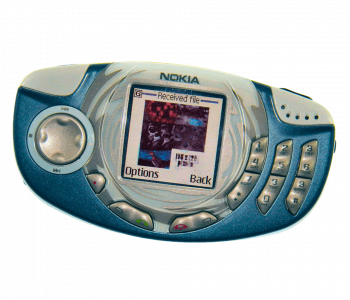
The Nokia N-Gage was a hybrid gaming console and mobile phone that was released in 2003. It had a unique design that combined the form factor of a mobile phone with that of a gaming console. It had a landscape-oriented screen with gaming controls on either side. The phone had a 2.1-inch colour display with a resolution of 176 x 208 pixels.
The Nokia N-Gage was designed primarily for gaming and had several built-in games, as well as the ability to play games on MMC (Multimedia Card) game cards. It did not have a built-in camera but had 3.4 MB of built-in memory, as well as a slot for MMC memory cards. The phone had a built-in music player that allowed users to listen to MP3 and AAC files. It also had a talk time of up to 4 hours and a standby time of up to 230 hours.
Overall the Nokia N-Gage was a unique and innovative phone that was ahead of its time in terms of its design and focus on gaming. However, it was not a commercial success and was eventually discontinued.
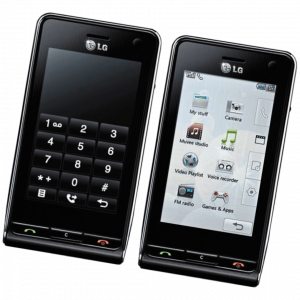
The LG Viewty, also known as the LG KU990, was a touchscreen phone that was released in 2007. It had a sleek design with a large 3-inch touchscreen display and a minimalist button layout. The phone had an impressive 5-megapixel camera with a Schneider-Kreuznach lens and a range of camera settings, including manual focus and ISO settings.
The LG Viewty was one of the first phones to offer high-quality video recording, with the ability to record video at up to 120 frames per second. Alongside this it had a built-in music player and video player, as well as an FM radio. The Viewty also had 100 MB of built-in memory, as well as a microSD card slot for expandable memory.
The LG Viewty was a popular phone that was praised for its high-quality camera and multimedia features. Its touchscreen display was also considered to be one of the best of its time. However, the phone did not have the same level of app support or app store as later smartphones, and its user interface could be difficult to navigate for some users.
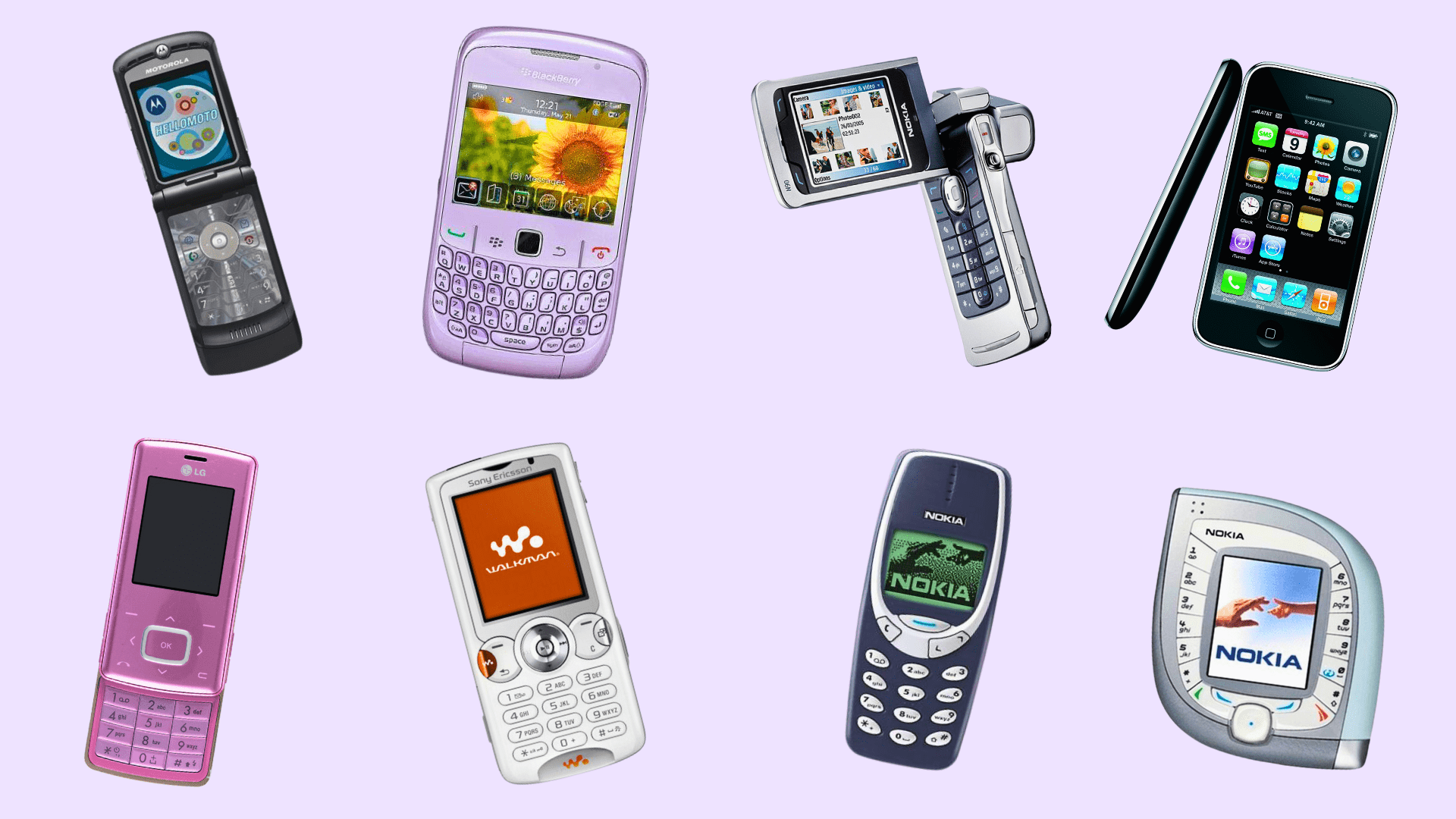
Thanks for reading "Motorola Razr to the LG Chocolate: Classic Phones We Miss From The 2000s" on January Media.
Television can be a powerful source of comfort, providing an escape from the stresses of daily life and offering a chance to relax and unwind. Whether...
Snowpiercer is the Netflix post apocalyptic, dystopian drama that began in May 2020 starring Daveed Diggs, Sean Bean and Jennifer Connelly. Snowpierce...
Here are our picks for TV Shows and Films to watch over the Christmas period this year (2022). We have taken a look at everything that there is to off...
Gavin & Stacey, created by James Corden and Ruth Jones in 2007, revolves around the lives of two families - one in Billericay, Essex, and the othe...
Britain’s biggest cooking reality show is back on our screens this Autumn. The Great British Bake Off Season 13 begins at 8PM on Tuesday 13th Septembe...
Step into the time capsule and embark on a nostalgic journey to the enchanting era of the 1990s with none other than the whimsical world of Sabrina th...


